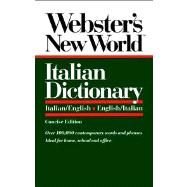A non-Italian person aspiring to be an Italian Gourmet spends a significant amount of time learning about the foods, flavors and cooking techniques of particular regions of Italy. As you study this appetizing topic, you might be surprised at the regional groupings of famous foods.
These days, most Americans have at least heard of prosciutto, Parmiggiano-Reggiano (or it’s domestic nickname, “parmesan” cheese), and balsamic vinegar. But, did you know that that the most famous renditions of these traditional foods all come from the same region?
That region is Emilia-Romangna. You may not have heard of the region by its proper name, but Emilia-Romangna is famous for the university town of Bologna and for its food capitals of Parma and Modena.
Like so many European foods, products that are made from local ingredients and prepared in a particular style tend to have names that reflect where they are from.
For instance:
Parmiggiano-Reggiano – the king of cheeses. Parmiggiano-Reggiano is made in Parma from local cow’s milk, using a traditional method. Wheels of authentic Parmiggiano-Reggiano are stamped with an identifiable brand on the outside of the rind. Only authentic Parmiggiano-Reggiano is allowed to call itself by that name – everything else is “parmesan”. The most accessible Parmiggiano-Reggiano available in the states is aged just over a year. But if you can find some that is aged two to three years or more, you should be prepared to focus on this treasured cheese while you eat it and allow time for savoring.
Prosciutto di Parma – the legendary dry-cured ham that is only made in Parma. Prosciutto di Parma is referred to as a “prosciutto crudo”, meaning “ham un-cooked”. “Prosciutto cotto” is cooked ham. There are other regions in Italy that make prosciutto crudo. For instance, Prosciutto di San Daniele is made in an Italian region farther north and Prosciutto Toscano is made in Tuscany. Each prosciutto crudo tastes different because local pigs are used, the local pigs only eat local feed, and only local, traditional seasonings are used.
Balsamic Vinegar – the thick, sweet/tangy Italian condiment that Italians use in so much more than salads. True balsamic vinegar – Aceto Balsamico Tradizionale di Modena – is made from the syrup of sweet wine grapes and aged a minimum of 12 years. You may at first be amused by the tiny bottles that traditional balsamic vinegar comes in, until you realize how long it takes to make and how precious and mind-blowing the end result really is.
If you are trying to create an authentic Italian gourmet experience for an Italy-lover in your life, and they say they love “prosciutto and Parmiggiano”, look for the products that are made in Emilia-Romangna:
Prosciutto di Parma, Parmiggiano-Reggiano, and Aceto Balsamico Tradizionale di Modena. Add some rustic bread and a glass of wine, if you like, and you can almost feel the lush Italian breeze.
Oops, I Did It Again!
5 years ago






